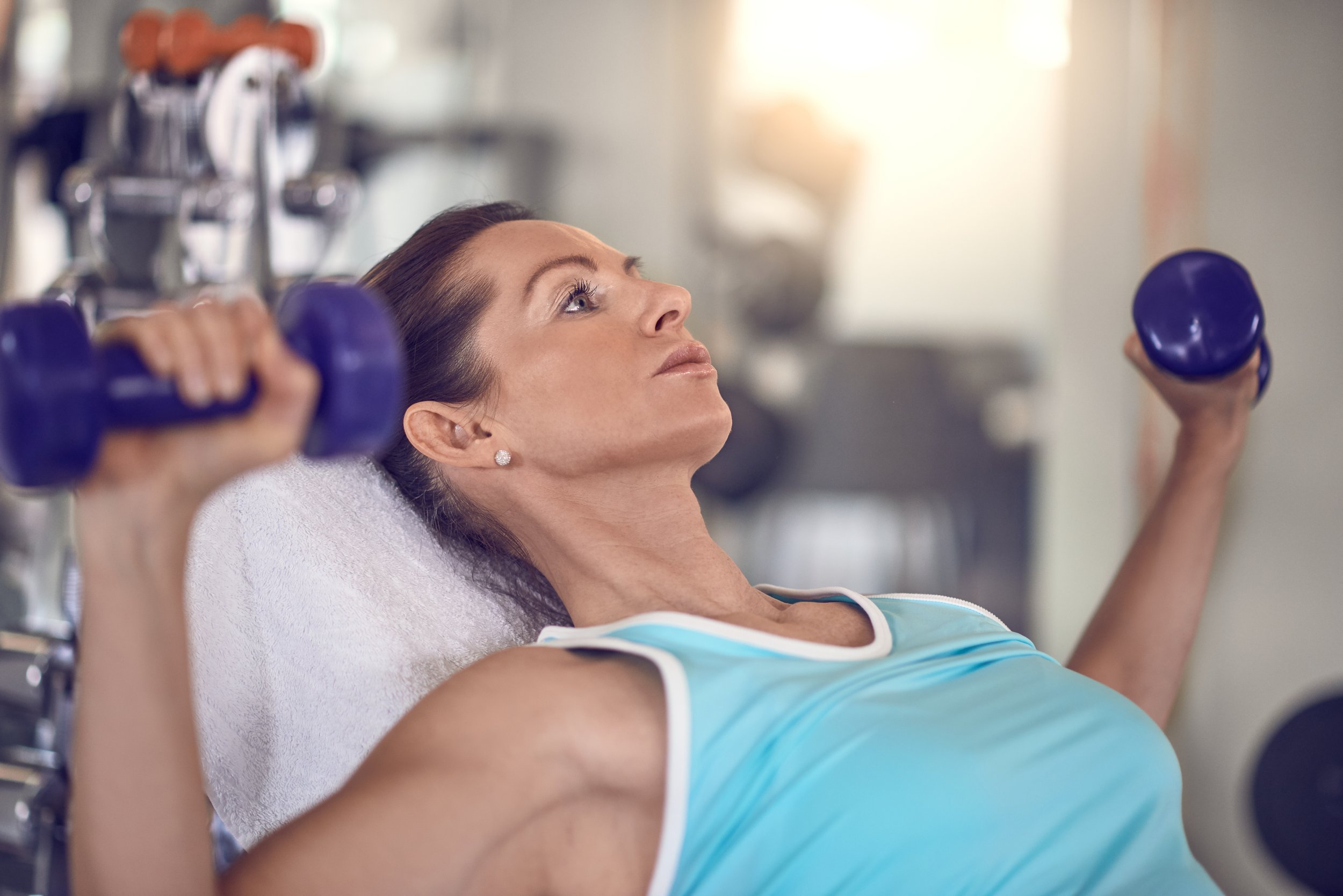How To Exercise For Osteoporosis Prevention
/While there are plenty of reasons to celebrate getting older, there’s no denying that our risk of disease goes up as we age. It’s not something to panic about—it’s something to be aware of! One ailment I want to direct our attention to is osteoporosis. Osteoporosis is prevalent in adults in general, but for women, our risk of developing osteoporosis increases after menopause.
Thankfully, there are ways to combat osteoporosis—one of the best ways is to exercise. So, here’s everything you need to know about exercising for osteoporosis prevention! (Including the specific types of exercise that protect our bones.)
What is osteoporosis?
Osteoporosis is a disease characterized by the weakening of bone loss overtime. It’s a bone-thinning disease, which means it puts you at a greater risk of breaking bones. Not only can this limit your mobility—making it difficult to walk and do everyday activities—but it can also limit your independence. People with osteoporosis generally live a lesser quality of life…and I don’t want that for any of you! It’s estimated that more than 200 million people currently suffer from osteoporosis, including 1 in 3 women over the age of 50. What’s worse? Most people don’t know they have osteoporosis until they break a bone, and once they do, it’s likely that they’ll break more. That’s why it’s so important that we focus on prevention!
Again, don’t panic! Just keep reading, I’ve got you covered.
How you can prevent osteoporosis with exercise
You know how exercise helps strengthen muscles? Well, it’s a similar situation with bones. When you exercise consistently, you build bone density. Certain types of exercise do this more effectively than others, which I’ll talk about in a moment. (P.S. It’s worth noting that it’s equally important to eat a healthy diet rich in calcium and vitamin D!)
The two types of exercise that are most effective for increasing bone strength and density are: 1) weight bearing exercise and 2) strength training.
Weight bearing exercise is defined as any activity where you’re bearing the load of your own weight. In other words, anything that requires you to be on your feet, your bones and muscles working against gravity to keep you upright. A few examples of weight bearing exercise include:
Brisk walking (Looking at you #PJWWalkingWarriors!)
Hiking
Running/jogging
Dancing or Zumba
Jumping rope
Tennis
Climbing stairs
Keep in mind that some of these activities are higher impact, especially running and jumping rope, so if you have knee problems or suspect you have a bone issue, it’s probably smart for you to stick to lower impact exercises like hiking, walking, and dancing.
The difference between weight bearing exercise and strength training is that for strength training, resistance is needed. This can be in the form of weights, resistance on a machine or band, etc. Resistance makes our muscles and bones work harder, which in turn leads to their strengthening. Examples of strength training are:
Free weights (think dumbbells, kettlebells, barbells, medicine balls, etc.)
Weight machines (like the ones you see in the weights area of the gym)
Bodyweight exercises (e.g. squats, pushups, lunges)
Resistance bands (the elastic kind)
For bone health, it’s recommended to do 30 minutes of weight-bearing activity at least four days a week. I highly recommend choosing an activity you truly enjoy—you’re more likely to stay motivated and consistent when you’re having fun! As for strength training, generally speaking, you want to do a full body strength routine twice a week, minimum (strive for 30 minutes, or however long it takes to work every muscle group). You can practice strength training with a personal trainer, take a class, whatever works best for you. If you’re a beginner, I encourage you to seek out a trainer who you can book a few sessions with; someone who can show you the ropes and proper form so you can eventually do full workouts on your own.
A brief note on balance and flexibility: These are incredibly important too as we age. We have to devote time to practicing balance and working on our mobility and flexibility. You can check out my blog post on the importance of flexibility here and try my favorite mobility moves from my pilates instructor Morgan here!
I hope you loved this blog post—For more content like this, make sure to check out the Pure Joy Squad—our private community for women over 50!
Xo,
Renata

